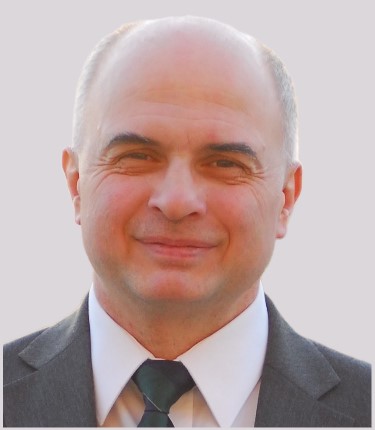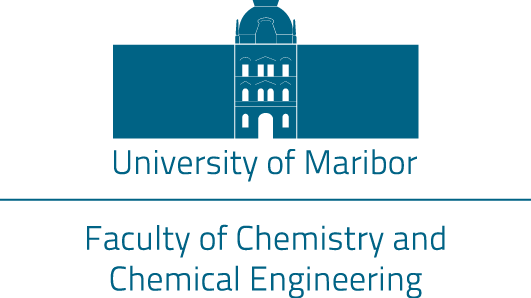Plenary Lecture
Prof. Petar Sabev Varbanov

Professor Dr Petar Sabev Varbanov, is a Full Professor at Széchenyi István University in Győr, Hungary, Habilitation School. Prof Varbanov is responsible for the training of postdoc fellows and PhD candidates in academic writing. He is also the Head of SPIL – Sustainable Process Integration Laboratory, NETME Centre, FME, Brno University of Technology – VUT Brno, Czech Republic. His main fields of activity are energy saving and efficiency, development and implementation of Process Integration, Total Site and regional integration for energy and water, waste to energy. He holds PhD in Process Integration from UMIST (2004), Marie Curie Fellow (twice), Dr Habil from Miskolc University in Hungary (202), Full Professor – Cracow University of Technology (2023). Editor of Energy, Energies, Cleaner Energy Systems. President of the Conference on Process Integration for Energy Saving and Pollution Reduction –PRES (www.conferencepres.site), ISC Member of conferences SDEWES (www.sdewes.org). More than 25 EC and other projects; 292 Web of Science Core Collection publications with H-Index of 43.
Energy implications of circular economy solutions and renewable energy integration
While the current World situation is characterised by increased geopolitical tensions, the environmental and sustainability issues have not disappeared. Moreover, the radical improvement of resource-saving and emission reduction is an objective inherently aligned with the objectives of increased resilience and energy/resource security. In this context, Széchenyi István University has launched an ambitious research programme dedicated to sustainability in a variety of domains, including fundamental science, engineering, supply chains, business processes, and social science. Within these, the Circular Economy and the integration of renewable sources into the energy supply to the economy are important areas related to each other, with the potential to minimise resource demands and emissions to a sufficient degree.
This presentation is aiming to overview key developments in the mentioned areas, mapping them into a coherent vision for integrated symbiosis networks that minimise the need for fresh resources without compromising the level and pace of economic development and preserving the resilience of regional economies. The core developments centre around two concepts – (a) Process Integration and (b) Process Network Synthesis and Optimisation. The former is a family of methods for minimising resource intake while maximising recovery and reuse. The latter is a sub-area of Process Synthesis exploiting the powerful P-graph framework for optimising structurally complex networks.
The overview is followed by analysis and discussion, showing the high importance of energy and exploiting energy integration as a fundamental binding element of diverse activities in society and economy. This is leading to an integrated vision for energy recovery, reuse, and cascading via optimal integration, with the goal of achieving higher rates of circularity in the Circular Economy and maximising renewable energy share with actual emission reduction.
Keynote Lectures
Dr. Roland Ludwig

Dr. Roland Ludwig is Associate Professor at the Department of Food Science and Technology at the University of Natural Resources and Applied Life Sciences, BOKU, Vienna, Austria, with 20 years of experience in research, teaching and university administration. His career includes postdoctoral research positions at the Research Center for Applied Biocatalysis in Graz, Lund University, the Austrian Center for Applied Biocatalysis in Vienna, and finally BOKU University, where he advanced from lecturer to associate professor. In 2013, he also co-founded DirectSens GmbH, a research company for the development and production of biosensors, and served as its Chief Scientific Officer. He combines a broad repertoire of biochemical, biotechnological and electrochemical methods to screen, engineer and characterize enzymes to study their reaction mechanism, physiological function and application in biocatalysis and biosensing. He has published more than 250 research articles, reviews and patents from third-party funded research projects and large international research consortia focused on the utilization of renewable energy and the creation of energy efficient, circular bioprocesses. Notable achievements include several awards and major research grants, including the ERC Consolidator Grant. He has been involved in numerous supervisory and evaluative roles, including appointment-, evaluation- and thesis committees across Europe and several professional societies.
Selective enzymatic ligno-cel-lulose modification and de-polymerization
The bioeconomy relies strongly on biomass as a renewable resource for materials, chemicals and fuels. The complex polymeric structure of plant cell walls offers advantageous properties for its use as materials, e.g. in construction, because of its mechanical stability and resistance to degradation. Isolated carbohydrate polymers from plant cell walls, such as cellulose and hemicelluloses, can be used in a variety of applications, ranging from food to consumer products to building materials. The highly interconnected, polymeric structure of the cell wall, however, also poses a challenge to the separation of individual components as well as to the isolation of defined chemical building blocks as required for green biorefineries. Fungi secrete oxidoreductases at an early stage of biomass deconstruction to improve the accessibility of plant polymers to fungal hydrolytic enzymes. We are investigating this cascade depolymerization strategy to unravel different polymers without subjecting them to total hydrolysis and to use them in circular applications.
Lytic polysaccharide monooxygenases (LPMO) are a class of endo-acting peroxygenases that are formed in multiple forms by many organisms and cleave various carbohydrate polymers to soften up the cell wall for the separation of constituents (Munzone et al., 2024). The kinetic characterization of LPMOs is a prerequisite to apply their catalytic versatility in industrial processes. To this end, we developed electrochemical techniques in order to (i) study the activity of LPMOs in com-bination with other enzymes (oxidoreductases and hydrolases) on poplar wood, and (ii) to determine the preferred polymeric substrate of a given LPMO as well as its pH- and temperature-dependent activity, apparent catalytic constants, and turnover stability (Schwaiger et al., 2024). Our results show that LPMOs are highly efficient biocatalysts for the initial depolymerization of cellulose and hemicelluloses operating in the S3 layer of wo-od cells (Gacias-Amengual et al., 2022). Depending on the intensity of the enzymatic treatment, the polysaccharides are either only slightly modified, providing access points for further chemical modification, or depolymerized into mono- and oligosaccharides for various applications.
Assist. Prof. Dr. Uroš Novak

Assist. Prof. Dr. Uroš Novak is an experienced Researcher with a Ph.D. in Chemical Engineering. He is skilled in natural biomaterials, research and development (R&D), startup development, chemical engineering, and science and has more than 15 years of experience. Author of 50+ scientific articles (1700+ citations) and speaker at more than 150 events. Leader of the research group for Bioplastics, biocomposites and zero-waste technologies at the Department of Catalysis and Chemical Reaction Engineering at the National Institute of Chemistry, Slovenia. He is passionate about establishing a sustainable flow of information among stakeholders, including producing products made out of innovative natural biopolymer material with high added value and the corresponding development of services focused on the needs of the food, cosmetics, and health-related industries. Passionate for transforming science into practical solutions. Finalist of the EU social innovation challenge in 2019, further leading to the creation of 123zero startup. Co-founder in two startups and director of the non-profit NGO. Recipient of multiple national and international awards for scientific excellence, citizen and communication work, innovations, and inventions. He is the coordinator of the Horizon Europe Mission Lighthouse project REMEDIES and the principal investigator for Horizon Europe projects. In 2023, he was invited to work as an external expert for the EU Commission.
Developing safe and sustainable hydrophobic textile coating materials through design – Natural renewable solutions to mitigate the toxicity of polyfluoroalkyl substances (PFAS)
Per- and poly-fluoroalkyl substances (PFAS) are synthetic compounds widely utilized in various industries for their beneficial characteristics, such as hydrophobicity, lipophobicity, chemical inertness, exceptional lubricity, non-stick properties, high fire resistance, resistance to extreme temperatures, and durability against weathering. Despite their advantages, recent studies have revealed that PFAS compounds exhibit persistent, accumulative, and highly mobile properties that pose environmental risks. (Sharma et al. 2024) Recognizing the toxicity of PFASs, ongoing research in the HE project PROPLANET is investigating alternative options (https://www.proplanet- project.eu/). A significant portion of PFAS compounds is employed in the textile sector. Our in-depth contribution focuses on exploring natural-based hydrophobic coatings for textiles, utilizing materials like natural waxes, fatty acids, naturally occurring polymeric compounds (such as proteins, carbohydrates, aromatic polymers, and natural rubber), and other natural substances. The aim is to create environmentally sustainable methods for applying these coatings to textiles, including relevant modification processes. It critically evaluates the properties and longevity of natural solutions in comparison to PFAS-based coatings, emphasizing the importance of transitioning away from PFAS compounds towards nature- derived alternatives for imparting hydrophobic properties to textiles. In the keynote lecture the path towards creation of highly hydrophobic (WCA <120°) bio based coating composed of AKD-polysaccharide, chitosan/OSA modified starch coatings and chitosan/wax microcapsules will be shown.
